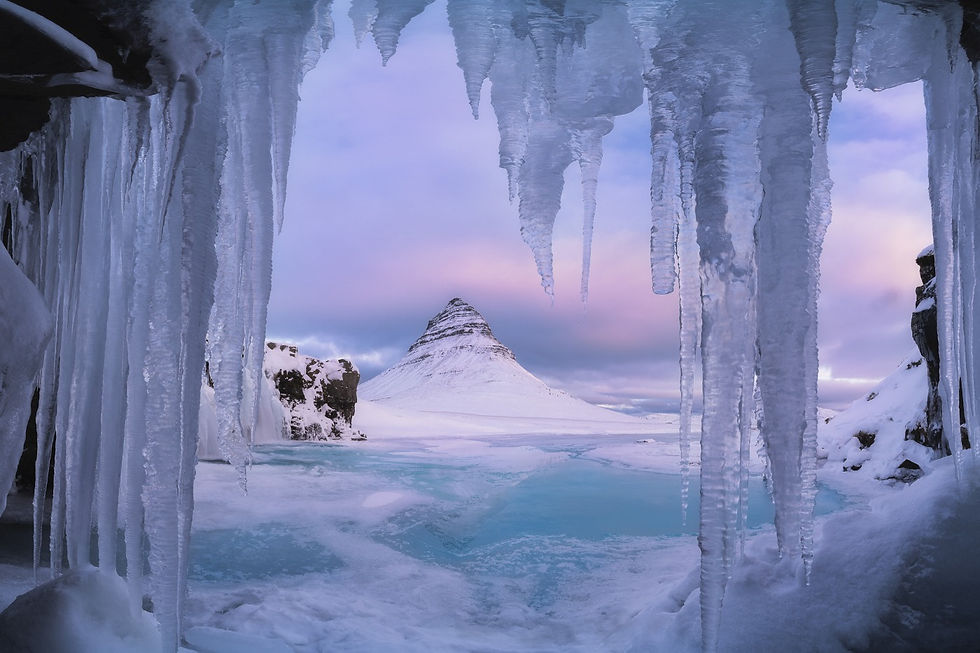Flying a drone in Iceland - What you need to know.
- Thorarinn
- May 30
- 3 min read
Updated: Jun 5

Why Fly a Drone in Iceland?
Iceland's diverse and rugged terrain provides stunning aerial perspectives that are often inaccessible by foot. Drones allow photographers and videographers to document the country's natural beauty from unique vantage points, enhancing storytelling and capturing the essence of Iceland's landscapes. Flying a drone in Iceland offers unparalleled opportunities to capture the country's dramatic landscapes—from volcanic craters and glacial lagoons to black sand beaches and roaring waterfalls. However, operating a drone legally requires understanding and adhering to Iceland's drone regulations, which align with European Union standards and include specific local rules for protected areas.
General Drone Regulations in Iceland.
As of December 2024, Iceland has adopted the European Union Aviation Safety Agency (EASA) drone regulations. Most recreational and semi-professional drone operations fall under the "Open Category," which includes drones weighing less than 25 kg and used within visual line of sight. Key rules include:
Maximum Altitude: 120 meters (394 feet) above ground level.
Distance from People: Maintain a safe distance; avoid flying over crowds.
No-Fly Zones: Prohibited near airports, government or military facilities, and certain protected areas.
Urban Restrictions: In cities like Reykjavík, drones must weigh under 3 kg and cannot be flown above building heights.
Identification: Drones must display the operator's name, address, and phone number.
Visual Line of Sight: Operators must keep the drone within sight at all times.
For detailed information, visit the Icelandic Transport Authority's drone regulations page: Drone Regulations - Open Category

Registration and Certification.
All drone operators in Iceland must register through the official portal: Flydrone.is. Registration is valid for five years and requires a small fee.
Operators must also complete the A1/A3 online exam, which is available through the Icelandic Transport Authority. This certification ensures that pilots understand the safety and operational guidelines necessary for responsible drone use.
Flying in National Parks and Protected Areas.
Drone use in Iceland's national parks and protected areas is subject to strict regulations to preserve wildlife and the natural environment.
Þingvellir National Park
Drone flights are restricted to early morning (before 09:00) and late afternoon (after 18:00) in specific areas to minimize disturbance to visitors and wildlife.
For guidelines and permit applications, visit: Droneflying for Personal Use - Thingvellir National Park.Þjóðgarðurinn á Þingvöllum
Vatnajökull National Park
Recreational drone flying is permitted without a special permit.
However, commercial drone operations still require authorization.
Snæfellsjökull National Park and Other Protected Areas
Drone flights in these areas require a permit from the Environment Agency of Iceland. Applications should be submitted at least 15 days in advance.

No-Fly Zones and Restrictions.
Certain areas in Iceland are designated as no-fly zones for drones to protect wildlife and ensure public safety.
Airports: No drone flights within 2 km of international airports and 1.5 km of other airports.
Urban Areas: Restrictions apply in cities; special permissions are required for flights over populated areas.
Protected Natural Sites: Areas like Jökulsárlón Glacier Lagoon, Reynisfjara Beach, Gullfoss, Seljalandsfoss, and Skógafoss have restrictions.
Always check for local signage and consult the Environment Agency's guidelines: FAQ - Umhverfisstofnun
Tips for Responsible Drone Flying in Iceland.
Plan Ahead: Research and obtain necessary permits well in advance.
Respect Nature: Avoid disturbing wildlife and adhere to designated paths and areas.
Stay Informed: Keep up-to-date with local regulations and weather conditions.
Be Considerate: Respect the privacy and experience of other visitors.
By following these guidelines, you can enjoy capturing Iceland's breathtaking landscapes while preserving its natural beauty for others.
This information is accurate as of the blog's publication, and I will update it if there are any changes.



Comments